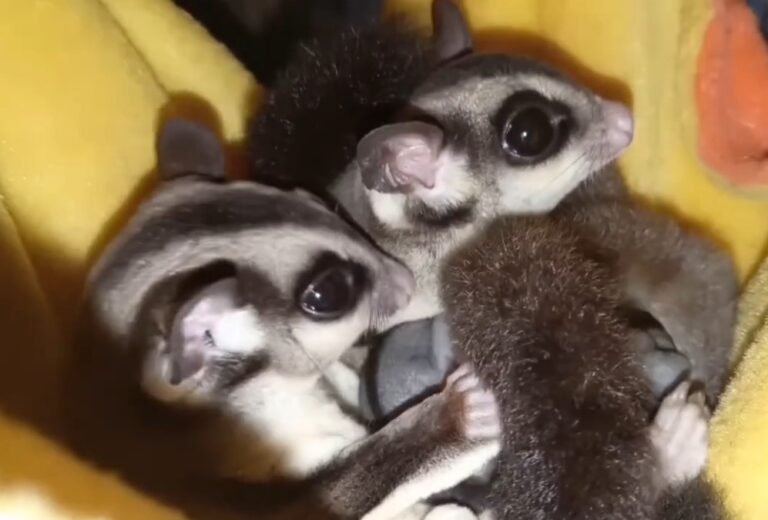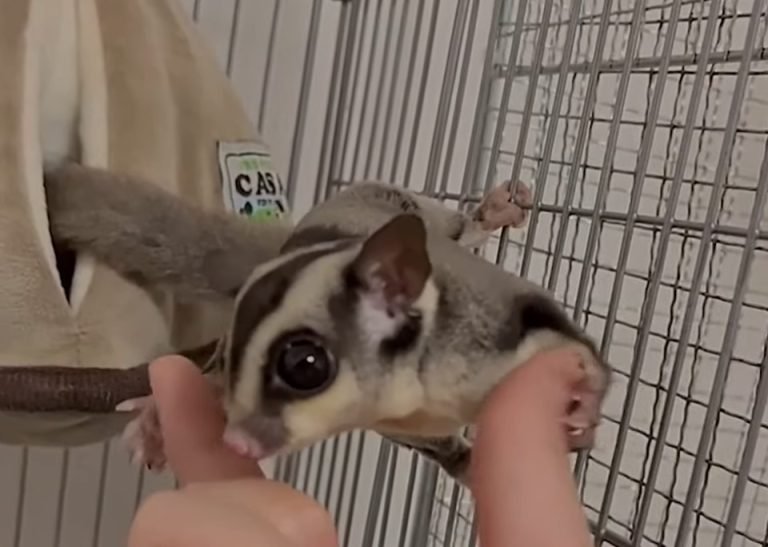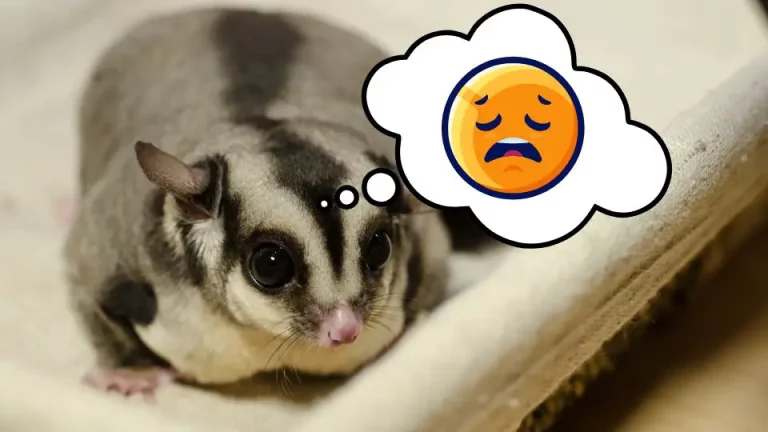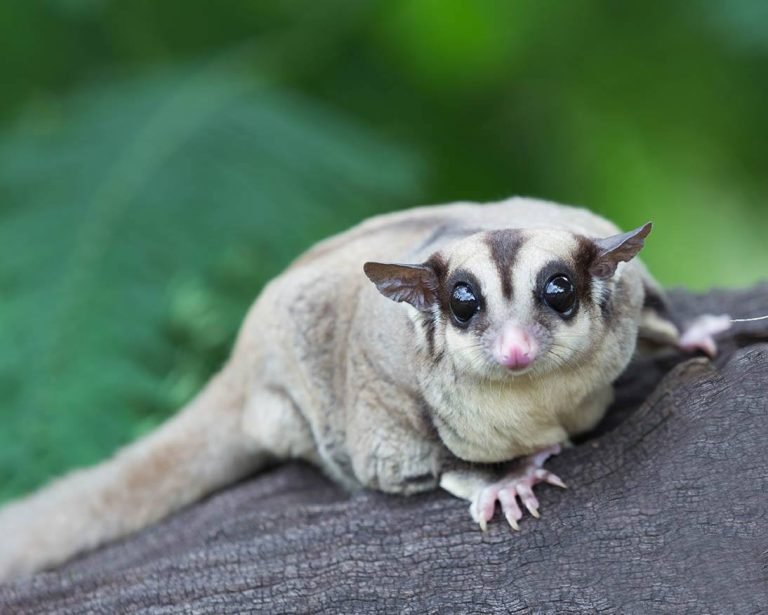Sugar Glider Grooming VS Self Mutilation Behavior Guide
Did you know that sugar gliders have a unique way of taking care of themselves? Understanding the difference between grooming and self-mutilation in these adorable creatures is crucial for their well-being. While grooming is a natural behavior, self-mutilation can be a cause for concern. Recognizing and addressing self-mutilation behavior is essential to ensure their health and happiness.
Grooming plays a vital role in the life of sugar gliders, as it helps them maintain good hygiene and establish social bonds. However, overgrooming can sometimes lead to self-mutilation, where they harm themselves excessively. Exploring the potential causes and consequences of this behavior becomes imperative to provide appropriate care.
In this guide, we will delve into the fascinating world of sugar glider grooming versus self-mutilation behavior. By understanding their natural instincts and being aware of warning signs, we can better nurture these delightful creatures while keeping them safe and sound.
So let’s jump right in and explore how we can support our sugar gliders’ well-being together!
Understanding Self-Mutilation in Sugar Gliders:
Self-mutilation behavior is a concerning issue that can affect sugar gliders. It is important for owners to understand this behavior and its underlying causes to provide appropriate care and support. Here, we will delve into the definition of self-mutilation in sugar gliders, common areas where they may engage in this behavior, the psychological factors contributing to it, as well as the impact of stress and boredom.
- Definition and explanation of self-mutilation behavior in sugar gliders: Self-mutilation refers to the act of causing physical harm to oneself intentionally. In sugar gliders, this behavior often manifests through excessive chewing or biting of their own body parts, resulting in injuries such as open wounds or bald patches.
- Common areas where sugar gliders may engage in self-mutilation: Sugar gliders commonly target specific areas when engaging in self-mutilating behaviors. These areas include their tail, limbs, paws, and genital region.
- Discussion on the psychological factors that contribute to self-mutilation: Several psychological factors can contribute to self-mutilation in sugar gliders. These may include depression, anxiety, frustration, loneliness, or even a lack of mental stimulation.
- Examining the impact of stress and boredom on self-mutilating behaviors: Stressful environments or situations can trigger self-mutilating behaviors in sugar gliders. When these animals experience prolonged periods of boredom without adequate mental or physical stimulation, they are more likely to engage in such harmful activities.
Understanding why sugar gliders exhibit self-mutilating behaviors is crucial for providing them with proper care and addressing their needs effectively. By recognizing the signs early on and taking steps to alleviate stressors while promoting a stimulating environment enriched with social interaction and playtime opportunities, owners can help prevent or manage these destructive habits.
Please note that if you observe self-mutilation in your sugar glider, it is advisable to consult with a veterinarian experienced in exotic pet care. They can provide further guidance and develop a tailored plan to support your sugar glider’s mental and physical well-being.
Warning Signs and Causes of Self-Mutilation:

Identifying physical signs that indicate a sugar glider is engaging in self-mutilation:
- Look out for bald patches, wounds, or trauma on the glider’s body
- Notice any excessive scratching or biting behavior
Discussing potential underlying medical conditions that can trigger self-harm behaviors:
- Stress levels may play a significant role in self-mutilating tendencies
- Depression or sexual frustration could be contributing factors
Highlighting environmental factors that may lead to self-mutilating tendencies:
- Loud noises or sudden changes in the glider’s surroundings can cause distress
- Lack of mental stimulation or an inadequate living environment might contribute to self-harm
Addressing the role of social interactions in causing or exacerbating self-harm:
- Isolation from other sugar gliders can lead to increased stress levels and self-mutilation
- Aggressive behavior from cage mates may also trigger self-harming tendencies
Self-mutilation in sugar gliders can have many reasons, including physical pain, emotional distress, or boredom. It is crucial to observe your pet closely and take action if you notice any signs of self-mutilation. Consulting with a veterinarian who specializes in exotic animals is highly recommended. They can help determine the root cause of the behavior and provide appropriate treatment options.
Remember, prevention is key. Ensuring your sugar glider has a comfortable and stimulating environment with plenty of opportunities for social interaction can greatly reduce the risk of these harmful behaviors.
Preventive Measures for Self-Mutilation Behavior:
Creating a stimulating and enriching environment is crucial in preventing self-mutilation behavior in sugar gliders. By providing a safe and engaging space, you can help redirect destructive behaviors and promote their overall well-being.
- Enrichment Activities: Offer a variety of toys, such as tunnels, ropes, and puzzle feeders, to keep your sugar glider mentally stimulated. These toys will help prevent boredom-related self-harm by giving them something constructive to focus on.
- Climbing Structures: Install climbing structures like branches or ladders inside their cage. This allows sugar gliders to engage in natural behaviors like climbing and exploring, reducing the risk of self-mutilation.
- Balanced Diet: Ensure your sugar glider’s diet is nutritionally balanced. Consult with an exotic veterinarian to determine the appropriate food choices for your pet. A healthy diet promotes good physical health, which can indirectly reduce the likelihood of self-harming behaviors.
- Professional Help: If you notice persistent self-mutilation behavior despite your efforts, seek professional help from an exotic veterinarian experienced in treating sugar gliders. They can provide specialized advice, treatment options, or medications if necessary.
By implementing these preventive measures, you can create an environment that supports your sugar glider’s mental and physical health while minimizing the risk of self-mutilation behavior. Remember to observe their behavior closely and make adjustments as needed to ensure their well-being.
Importance of Proper Grooming for Sugar Gliders:
Proper grooming is crucial for sugar gliders to maintain healthy fur, skin, and nails. Regular grooming not only keeps them looking their best but also helps prevent a range of health issues. Here’s why grooming is essential for the well-being of your sugar glider:
- Maintaining Healthy Fur, Skin, and Nails: Grooming plays a vital role in keeping the fur of sugar gliders clean and free from tangles or matting. By removing dirt, debris, and excess oils through grooming, you can ensure that their fur remains soft and lustrous. Regular grooming helps to keep their delicate skin healthy by preventing irritation or infections.
- Preventing Health Issues: Sugar gliders are prone to various health problems that can be avoided with proper grooming. Regular brushing helps prevent matting, which can lead to discomfort and even skin infections. Trimming their nails regularly is essential to avoid overgrowth that may cause pain or difficulty in climbing.
- Bonding Opportunity: Grooming sessions provide an excellent opportunity for bonding between owners and their sugar gliders. The gentle touch during grooming helps build trust and strengthens the bond between you and your pet. It allows them to feel secure while being cared for by you.
- Overall Well-being: Proper grooming contributes significantly to the overall well-being of sugar gliders. It promotes good hygiene habits while ensuring they remain comfortable in their own skin. When your furry friend feels clean and pampered, it positively impacts their mental state as well.
By prioritizing regular grooming sessions for your sugar glider companion, you are actively investing in their health and happiness. So grab a brush and indulge in some quality bonding time while keeping your little buddy looking fabulous!
Remember: A well-groomed sugar glider is a happy sugar glider!
Addressing Self-Mutilation: Tips and Techniques:

Identifying Triggers:
- Pay close attention to your sugar glider’s behavior and look for patterns that may lead to self-mutilation.
- Observe changes in their environment, diet, or daily routine that could be triggering the behavior.
- Keep a journal to track any events or situations that seem to coincide with self-harm tendencies.
Redirecting Behaviors:
- Once you have identified potential triggers, focus on redirecting your sugar glider’s attention towards more positive activities.
- Provide a variety of safe toys and engaging distractions to keep them occupied and prevent destructive tendencies.
- Encourage interactive playtime with you or other gliders to stimulate their natural instincts.
Patience, Consistency, and Positive Reinforcement:
- Dealing with self-mutilation requires patience and consistency in addressing the behavior.
- Avoid punishment as it can exacerbate stress levels and worsen the problem.
- Instead, use positive reinforcement techniques such as rewarding your glider with treats or praise when they engage in non-destructive behaviors.
Safe Distractions and Toys:
- Offer a range of safe toys specifically designed for sugar gliders to discourage self-mutilation.
- Look for toys that provide mental stimulation, promote physical exercise, and encourage natural behaviors like climbing or foraging.
- Rotate toys regularly to keep them interesting and prevent boredom.
For more detailed information on techniques for addressing self-mutilation in sugar gliders, please refer to the full chapter at [full chapter url]. Remember that every sugar glider is unique, so it may take time to find the right approach that works best for your pet.
Conclusion
In conclusion, understanding self-mutilation in sugar gliders is crucial for owners to ensure the well-being of their pets. By recognizing the warning signs and causes of self-mutilation, you can take preventive measures to minimize this behavior. Proper grooming plays a vital role in maintaining your sugar glider’s health and preventing self-mutilation.
To address self-mutilation, consider implementing the following tips and techniques: providing an enriched environment, offering mental stimulation through toys and activities, ensuring a balanced diet, and seeking professional help if needed. Remember that each sugar glider is unique, so it may require some trial and error to find what works best for your pet.
As a responsible sugar glider owner, it’s important to prioritize regular grooming sessions and pay attention to any changes in behavior or physical appearance. Maintaining good hygiene not only helps prevent self-mutilation but also promotes overall health.
If you have concerns about your sugar glider’s grooming or self-mutilation behavior, consult with a veterinarian who specializes in exotic animals. They can provide personalized advice based on your specific situation.
Remember, by taking proactive steps to understand and address self-mutilation behaviors in your sugar glider, you are ensuring their happiness and well-being.
FAQs
1.How can I tell if my sugar glider is engaging in self-mutilation?
Some signs of self-mutilation include excessive scratching or biting at their own body parts, visible wounds or injuries that they inflict upon themselves, hair loss patches due to over-grooming certain areas.
2.What are the common causes of self-mutilation in sugar gliders?
Self-mutilation can be caused by various factors such as stress from changes in environment or routine, boredom due to lack of mental stimulation or social interaction, underlying medical conditions like allergies or skin infections.
3.Can I prevent self-mutilation behavior in my sugar glider?
While it may not be possible to completely prevent self-mutilation, you can take preventive measures like providing a stimulating environment, ensuring a balanced diet, and seeking professional help if needed.
4.How often should I groom my sugar glider?
Sugar gliders should be groomed regularly to maintain their hygiene. This includes brushing their fur, trimming their nails, cleaning their ears, and checking for any signs of skin issues.
5.What should I do if my sugar glider shows signs of self-mutilation?
If your sugar glider exhibits self-mutilation behaviors, it is recommended to consult with a veterinarian who specializes in exotic animals. They can evaluate your pet’s condition and provide appropriate treatment or advice.







